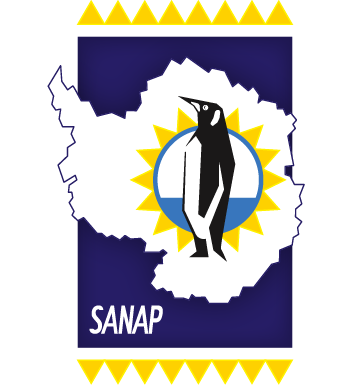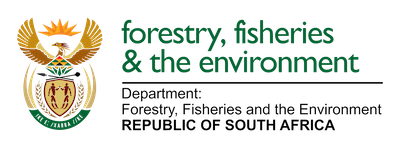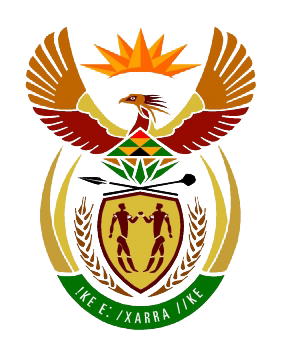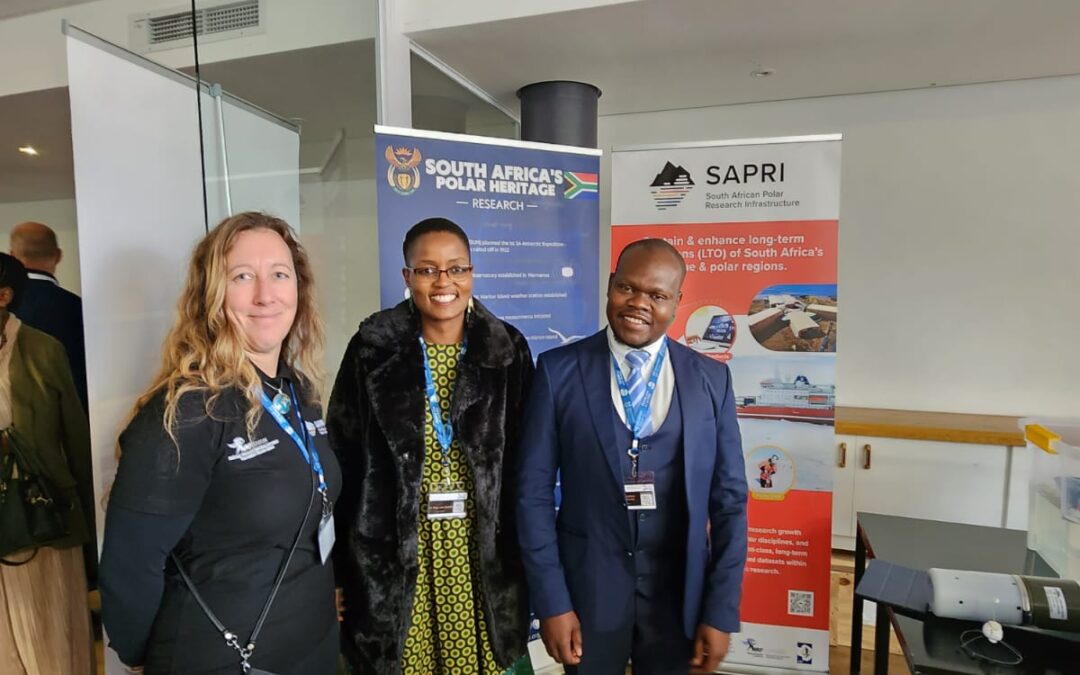
by Ria Olivier | Sep 9, 2023 | Announcement, Antarctica, Gough Island, News, Research, SA Agulhas II, SA Polar Research Infrastructure, SANAE IV, SANAP, SAPolarRI, SAPRI, Science, SEAmester, Southern Ocean, Stations, STEM
The South African Environmental Observation Network (SAEON) is a business unit of the National Research Foundation (NRF).
NRF SAEON celebrated its 21st anniversary on 7 September 2023. See the event programme below.
It is inspiring to see what SAEON has achieved over 21 years. “SAEON encompasses seven Research Nodes throughout South Africa and a National Office that is located in the country’s political capital of Pretoria” (Read more about the nodes here).
SAEON manages three research infrastructures developed by the Department of Science and Innovation (DSI) as part of the South African Research Infrastructure Roadmap (SARIR). The South African Polar Research Infrastructure (SAPRI) is one of the three research infrastructures, and was established in 2021 (see the SAPRI timeline here). The SAPRI hub is located in the SAEON Egagasini Node offices in Cape Town.
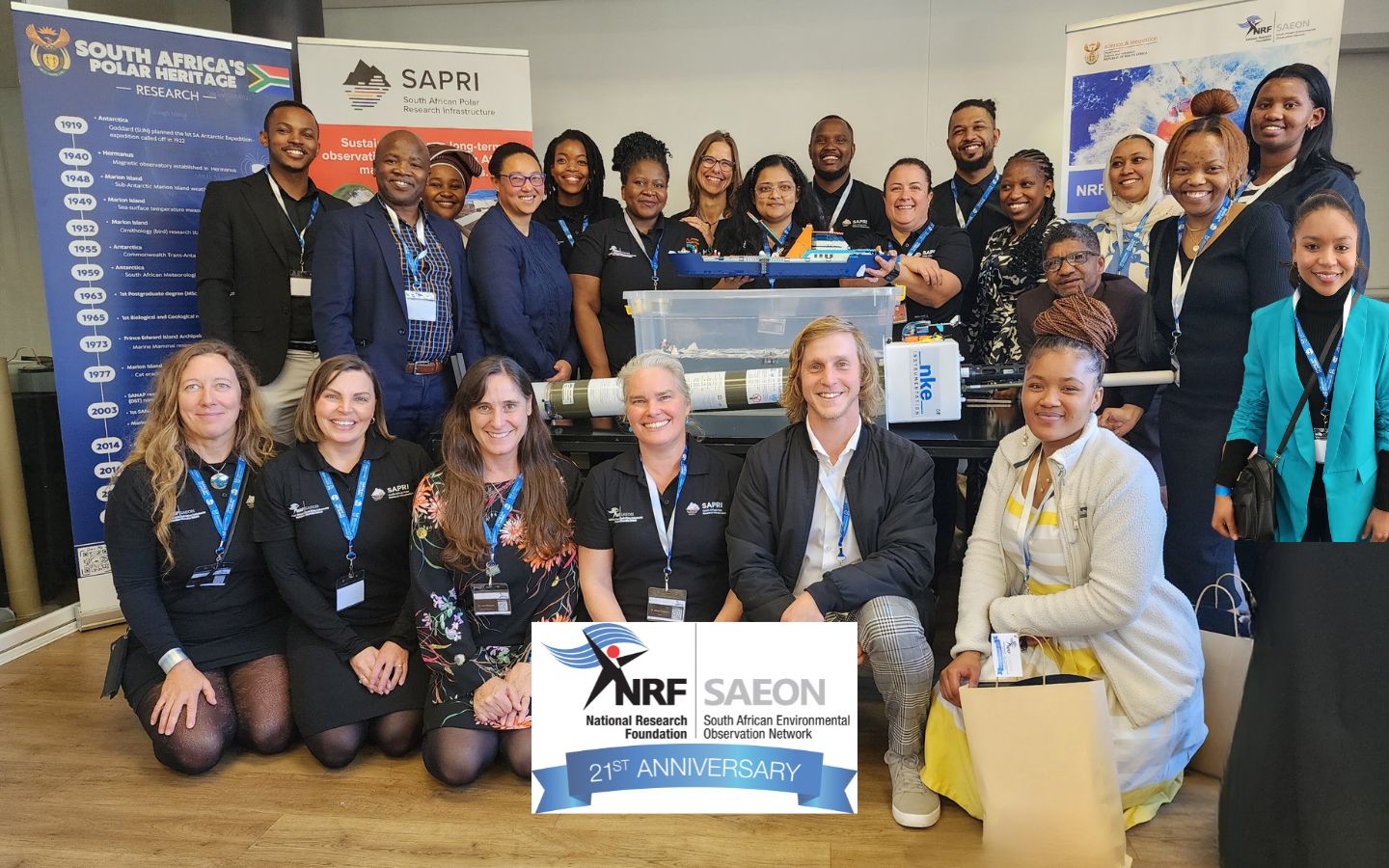
The SAEON Egagasini Node and SAPRI team at the NRF SAEON 21st Anniversary. Video: click on the image.
Anche Louw, South African Polar Research Infrastructure, 09 September 2023

by Ria Olivier | Aug 25, 2023 | Antarctica, Legacy, Marion Island, News, Prince Edward Islands, Research, SA Agulhas II, SA Polar Research Infrastructure, SANAE IV, SANAP, SAPolarRI, Science, Southern Ocean, Stations, STEM, sub-Antarctic
The South African Polar Research Infrastructure (SAPRI) with the Antarctic Legacy of South Africa (ALSA) and the South African Environmental Observation Network (SAEON) Egagasini Node visited Generation Schools Imhoff, in Kommetjie on 20 July 2023.

Generations Primary is based on the Montessori ethos of independent children working and the Cambridge model of education. The school structure consists of various phases with mixed-age groupings “which allows children to work together, to learn from and teach each other.” The mixed-age group 9 – 12 years has recently completed projects and tasks related to the Antarctic environment, creating a space where learners can develop, in a creative way, a sense of the 7th continent. The invite to visit the school to further connect the application of academics in the real world was welcomed.
The 110 learners with teachers, were presented with a rhythmic exercise with boom-whackers (musical plastic tubes) as an ice-breaker activity, which was followed by a “Journey through the Southern Ocean, via Marion Island, to Antarctica”, which was presented by Ria Olivier (ALSA), Sikelelwa Mtyenene (SAEON Egagasini Node), Abuyiselwe Nguna (SAPRI) and Riesna R. Audh (SAPRI). Various interactive exhibits were set up in the school hall, which further gave learners the opportunity to interact with the ALSA, SAPRI and SAEON teams.
“Journey through the Southern Ocean, via Marion Island, to Antarctica”
Follow the journey below.
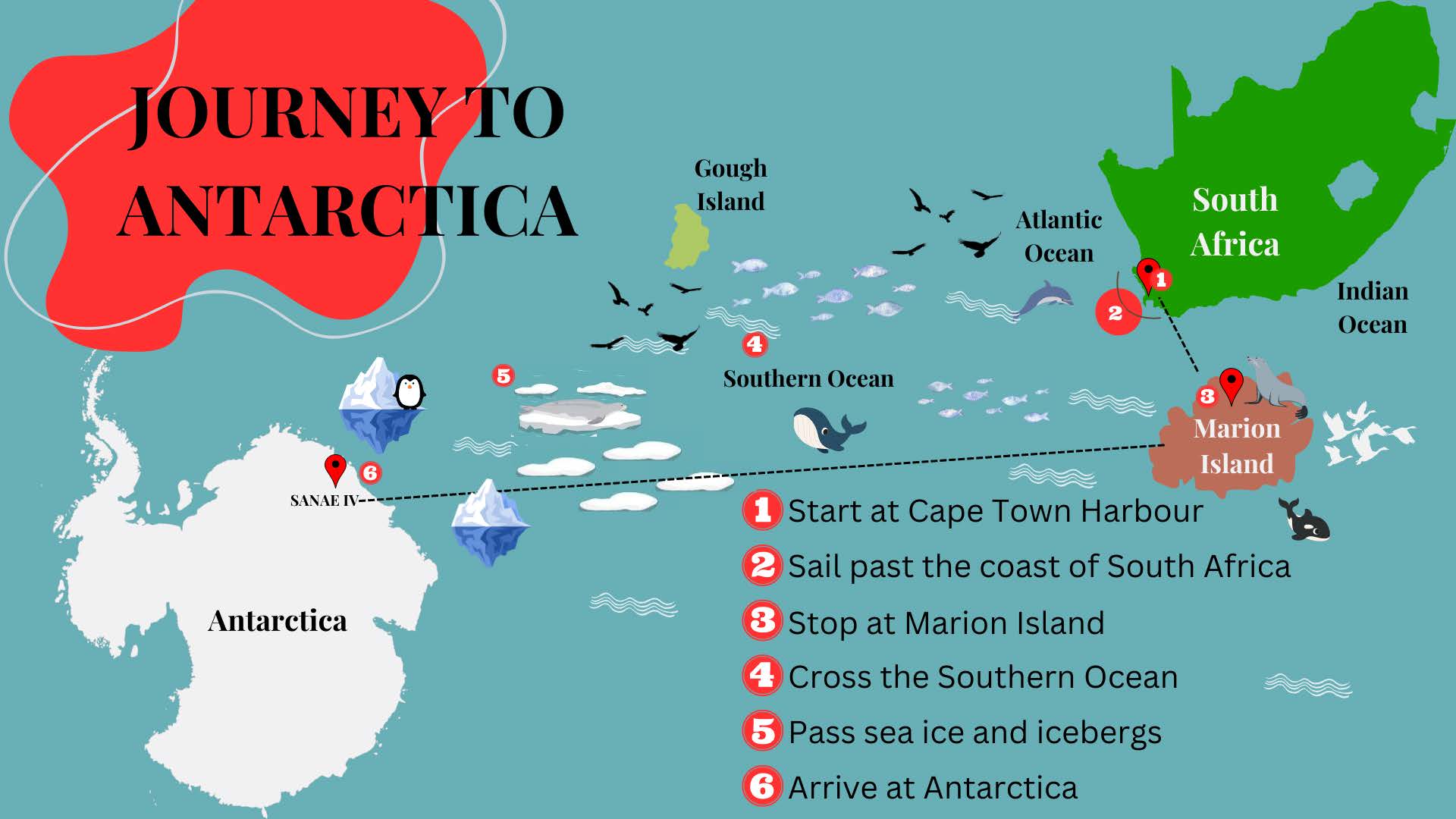
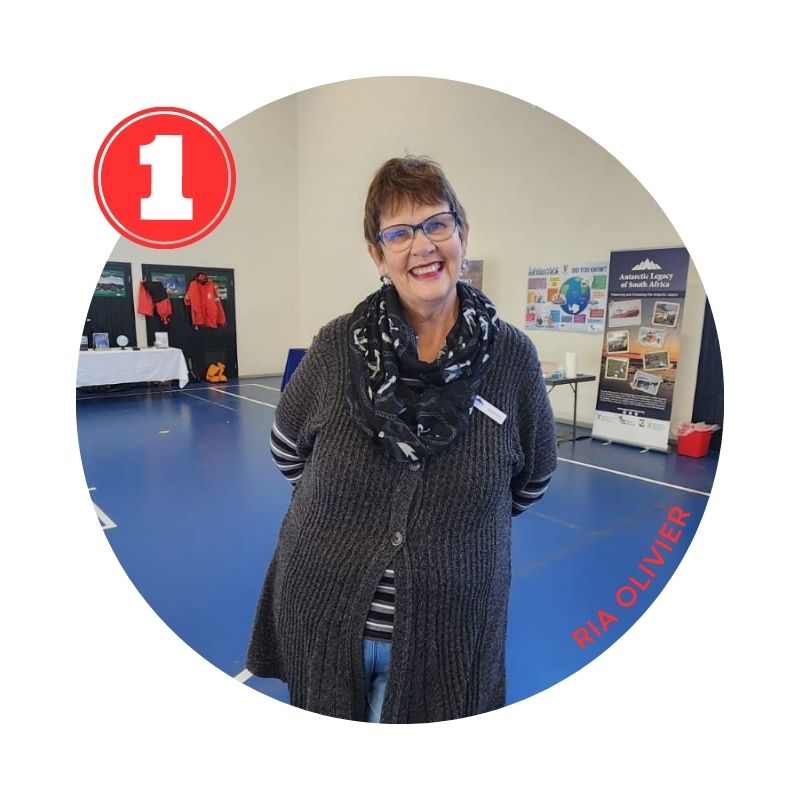 | Start at Cape Town Harbour - Ria Olivier
History: Archivist with 10 years' involvement in SANAP and Principal Investigator of the Antarctic Legacy of South Africa project, talks about South Africa's involvement in the Antarctic regions. |
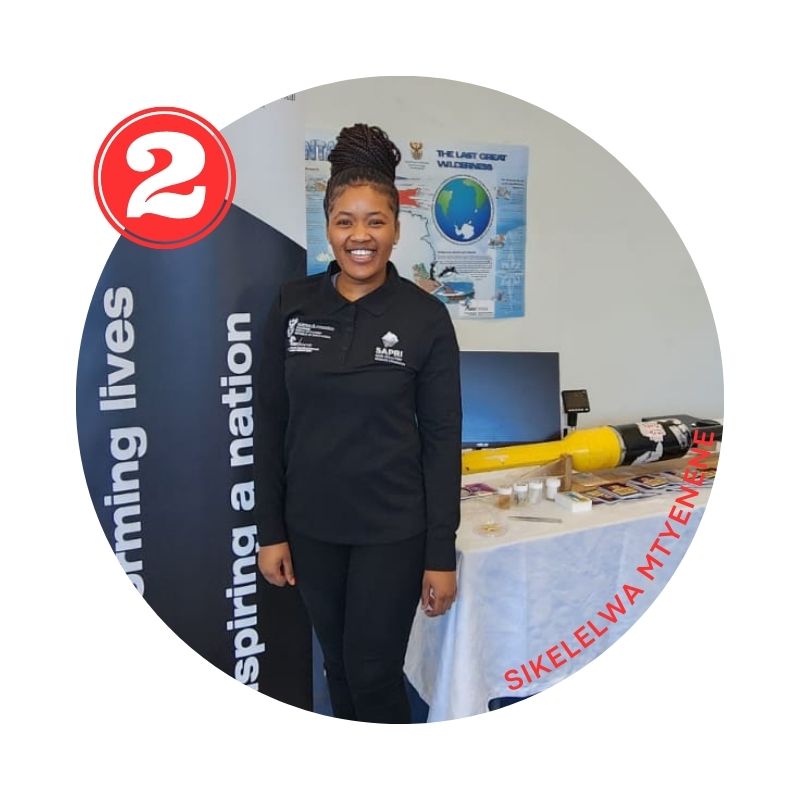 | Sail past the coast of South Africa - Sikelelwa Mtyenene
Coastal voyage: research conducted in the coast off South Africa, where the Atlantic and Indian oceans meet. |
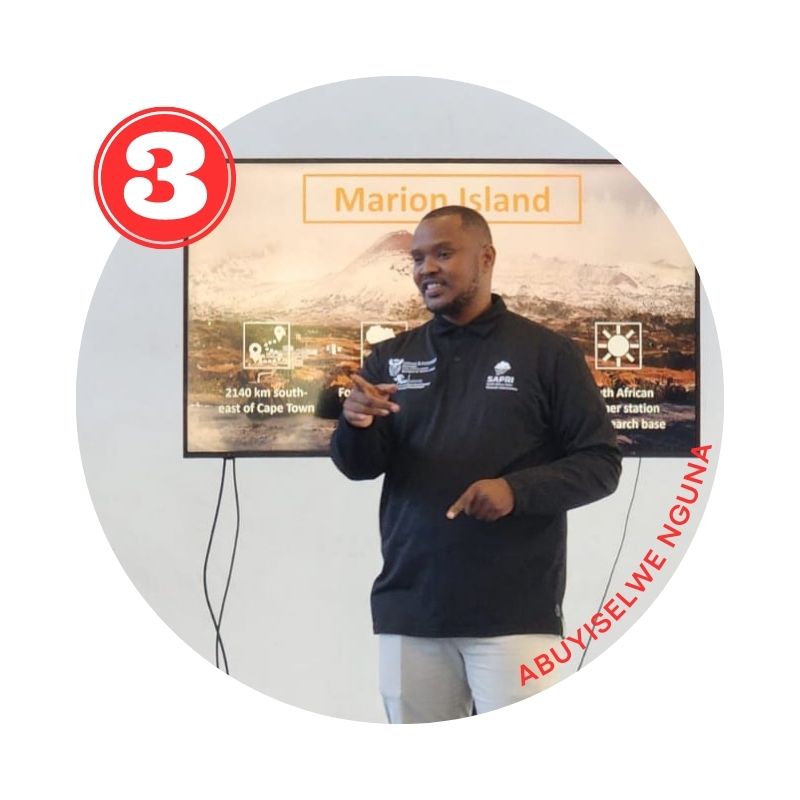 | Stop at Marion Island - Abuyiselwe Nguna
Science weather, fauna and flora. The speaker shares his experience as a field assistant, part of a Marion Island overwintering team member. |
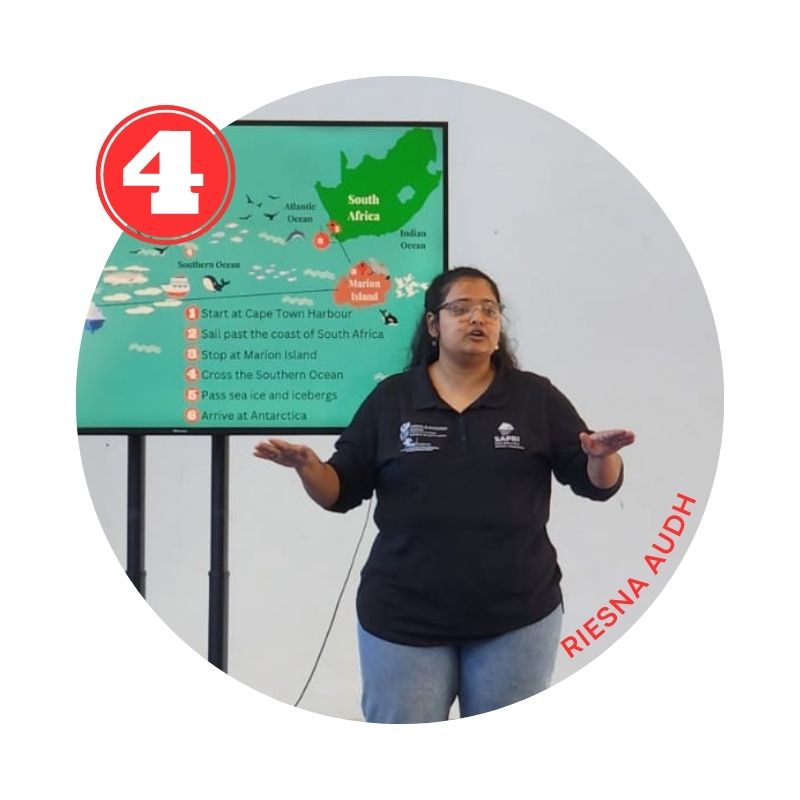 | Cross the Southern Ocean - Riesna Audh
Oceanographic sampling on board the South African research and supply vessel, the S.A. Agulhas II. |
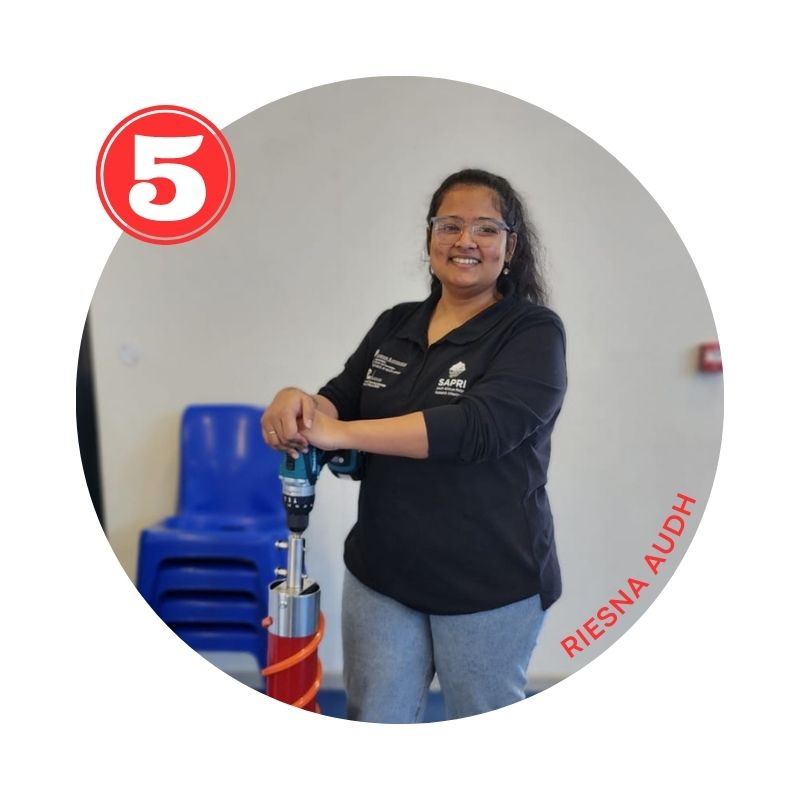 | Pass seaice and icebergs - Riesna Audh
The speaker has been on board the S.A. Agulhas II during various Antarctic expeditions (counting to over 300 days in total), for her research on sea ice in the Antarctic marginal ice zone. She shares her experiences. |
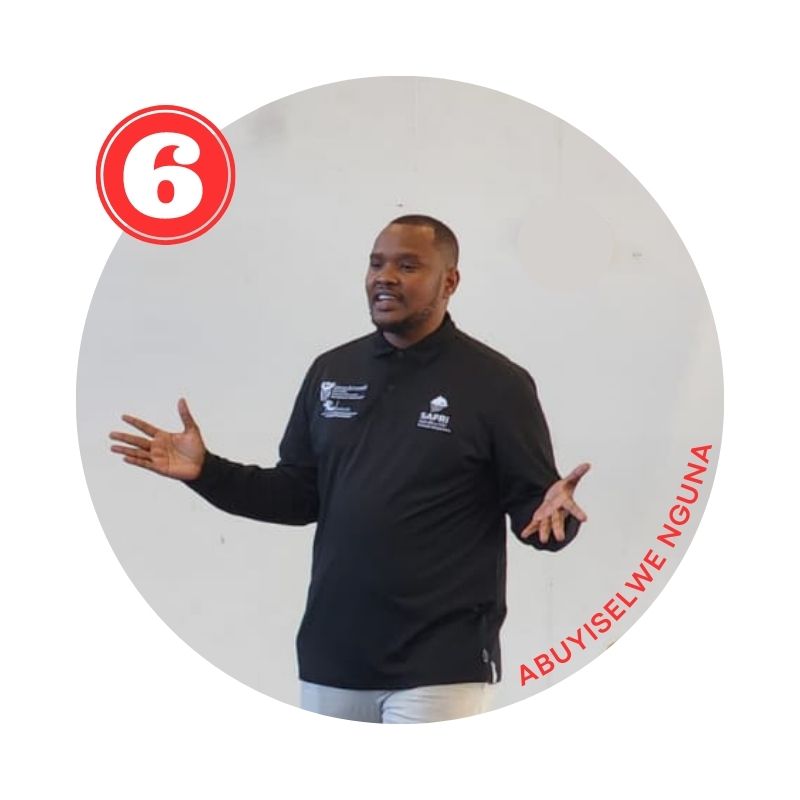 | Arrive at Antarctica - Abuyiselwe Nguna
What you can expect. Antarctic operations. Clothing (protective gear) and more info about the South African National Antarctic Expedition station (SANAE IV). |
Interactive exhibits
This collaborative science engagement event was focused on communicating marine and Antarctic research in such a way to foster curiosity for these regions. The school also received a set of books sponsored by the Antarctic Legacy of South Africa (see image below).
Video: Leaving fingerprints on Antarctica.
Graphic element (Journey to Antarctica) designed by: Riesna R. Audh, SAPRI, Polar Lab.
Anche Louw, South African Polar Research Infrastructure, 25 August 2023.
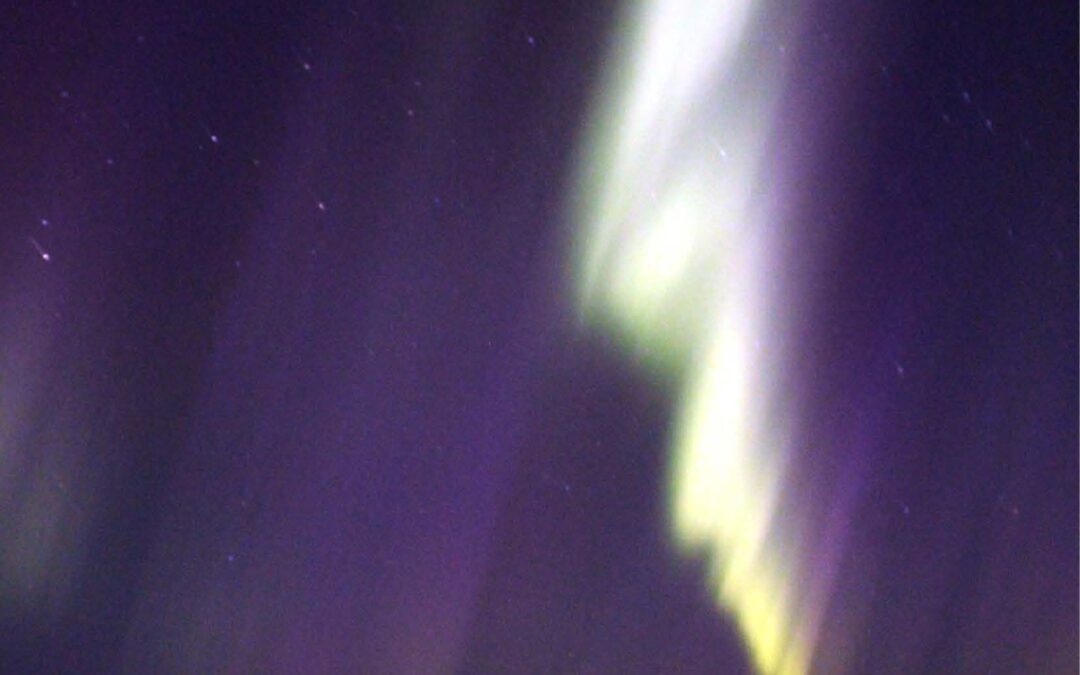
by Ria Olivier | Jul 24, 2023 | Announcement, Antarctica, Newsletters>SANAE Newsletters, Overwintering Team, Research, SANAE, SANAE IV, SANAP, Science, Stations, Team member
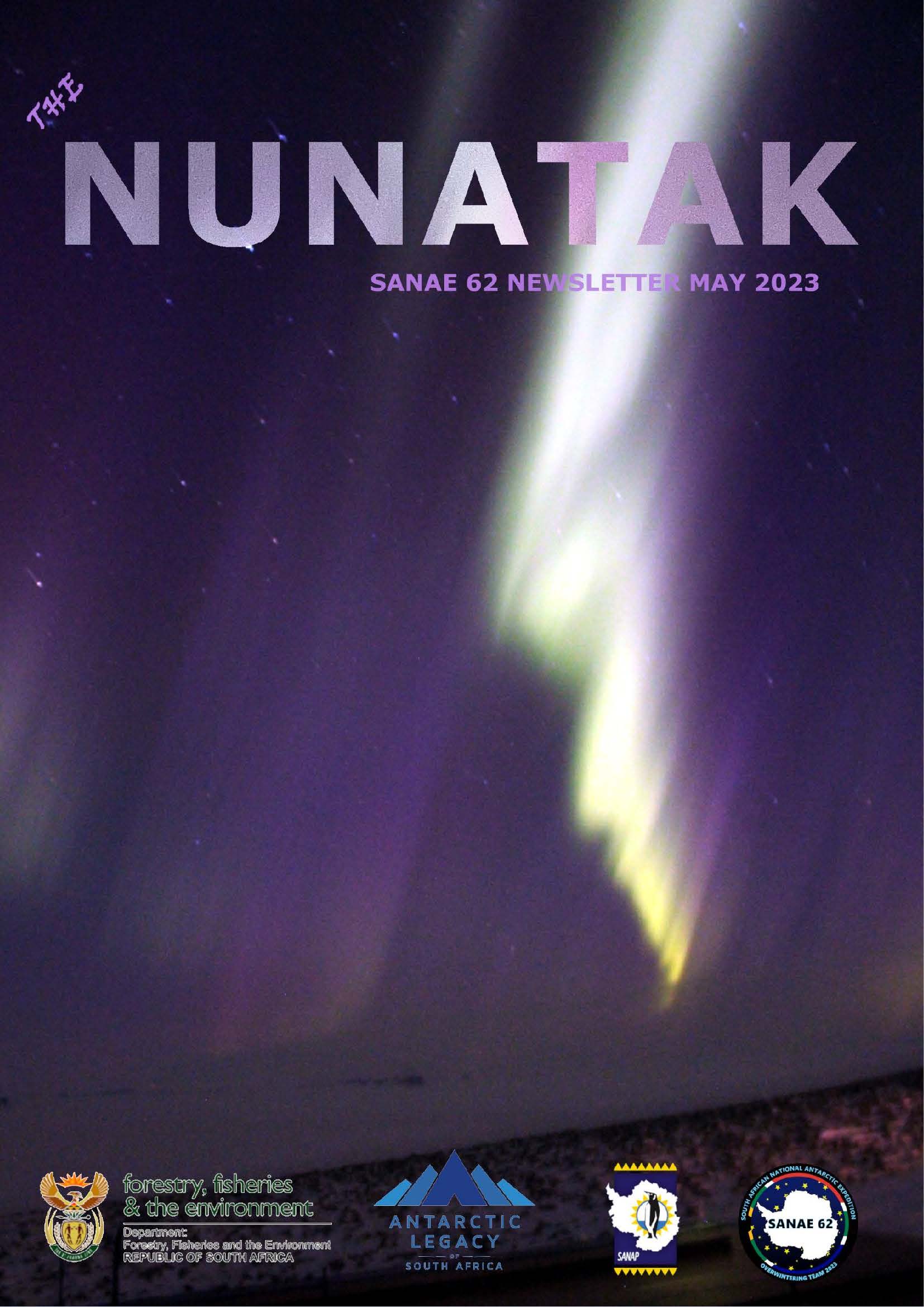 The 62nd South African National Antarctic Expedition (SANAE) team has published their second newsletter – May edition and is now available on the ALSA archive.
The 62nd South African National Antarctic Expedition (SANAE) team has published their second newsletter – May edition and is now available on the ALSA archive.
Get a glimpse into the life of overwintering team members at the SANAE IV research station.
A message from the Editor:
“You know there’s different ways to try and express the vast beauty of this world that can be articulated without a single phase. We don’t always consciously realise how magnificent nature can be. From witnessing auroras for the first time, or an optical phenomenon such as the light pillar effect and immensely strong winds with temperatures dropping below -45 °C, at wind chill”.
Read in the newsletter about:
- Chasing Auroras
- Weather data for May 2023
- Winter Solstice (Midwinter)
- Super Darn Radar
- Photo: see the weather circumstance during smelly duty (melting ice and snow for water)
Click here: SANAE 62 May Newsletter
View the S62 newsletters here!
This newsletter was written and compiled by the 62nd SANAE Overwintering Team. The team decided to name their newsletter ‘The Nunatak’, but for archival and consistency it will be archived as The Endurance (name of SANAE Newsletters).
Ria Olivier, Antarctic Legacy of South Africa & Anche Louw, South African Polar Research Infrastructure, 24 July 2023.

by Ria Olivier | Jul 17, 2023 | Announcement, Antarctica, Gough Island, Marion Island, Prince Edward Island, Prince Edward Islands, Research, SA Agulhas II, SA Polar Research Infrastructure, SANAP, SAPolarRI, SAPRI, Science, Southern Ocean, Stations, STEM, sub-Antarctic
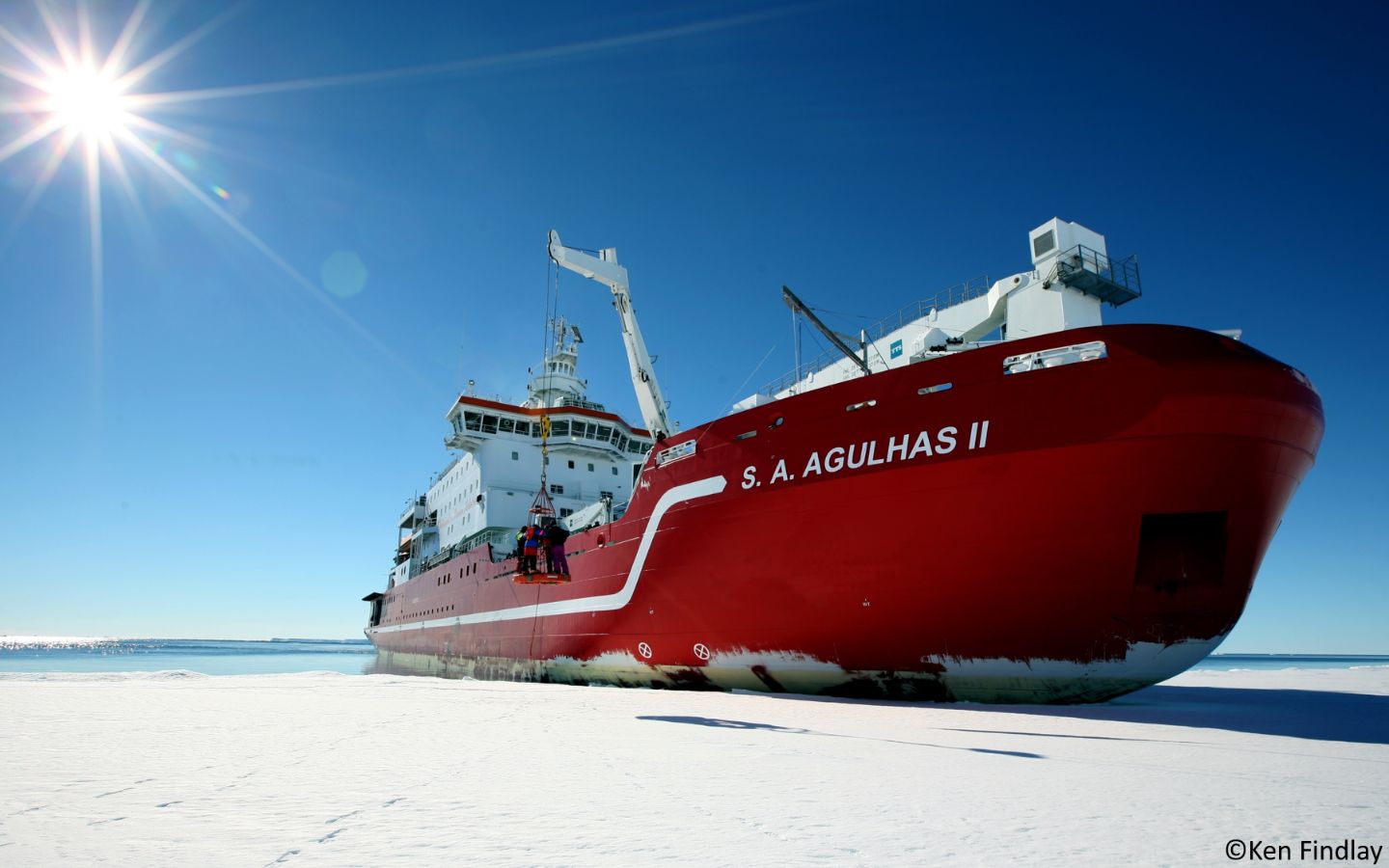
In 2015, The Department of Science and Technology (DST) facilitated the first dedicated oceanographic winter expedition on the S.A. Agulhas II from 23 July – 14 August 2015. The success of this expedition and others that followed demonstrated the need expressed by the wider marine and Southern Ocean research community and has prompted the DSI to secure funds for additional dedicated research expeditions in 2024, 2025 and 2026. The number of dedicated research expeditions will depend on the need expressed and the funding available. The core objective is to develop a comprehensive marine and Antarctic research expedition plan for 2024-2026, underpinned by the Marine and Antarctic Research Strategy (MARS) and contributing to the United Nations Decade of Ocean Sciences for sustainable development. These dedicated research expeditions will not only encompass oceanography but will provide research opportunities for marine-related and South African National Antarctic Programme (SANAP) –related research.
MARS was developed to provide a platform from which to coordinate marine and Antarctic research. The assumption is that improved coordination of a currently fragmented science system will improve returns on investment. Structured planning and a guided strategic focus will maximize human capital development and bring South Africa to the international forefront of knowledge production in these research areas. From this will follow innovation, increased international influence, and ultimately, economic growth.
The NRF and the South African Polar Research Infrastructure (SAPRI) have been tasked with coordinating various activities that will feed into improved planning and coordinating of marine and Antarctic research activities. As such, the NRF together with SAPRI would like to maximise on the opportunities for dedicated expeditions based on research community needs to enable long-term planning for expeditions, including sourcing funding for such expeditions. Dedicated expeditions may be implemented in periods where the S.A. Agulhas II is available. The schedule for the annual relief voyages indicate periods when the S.A. Agulhas II is not available (relief voyages for Antarctica, Marion Island and Gough Island). The direction (expedition transects), duration (including number and types of stations) and research focus of each dedicated research expedition would then be decided on by the DSI, together with the NRF, based on such variables as proposed participation, research area alignment, MARS theme alignment, contribution to the Ocean Decade and overall return on investment (data collection and capacity development.). To this end, SAPRI can support the costs of any in person meetings required to discuss collaborative research expeditions.
It should be noted that the attached annexure may change depending on the activities of the Department of Forestry, Fisheries, and the Environment (DFFE). For example, an emergency may require DFFE to deploy the S.A. Agulhas II to enable the Department of Public Works to do building maintenance and repairs at any of the three bases. As such, all potential dedicated expeditions will need to be approved by the DFFE before final planning can begin.
Please complete the template and return to tj.klarenbeek@risa.nrf.ac.za no later than 15 August 2023. The completed templates will give an indication of research community demand. More detailed research plans will be requested hereafter.
Expression of interest – dedicated S.A. Agulhas II voyages
Text: Expression of interest, Participation in dedicated research expeditions 2024, 2025, 2026. Tracy Klarenbeek, Director: Knowledge Advancement and Support (KAS), National Research Foundation (NRF), Research Innovation Support and Advancement (RISA).
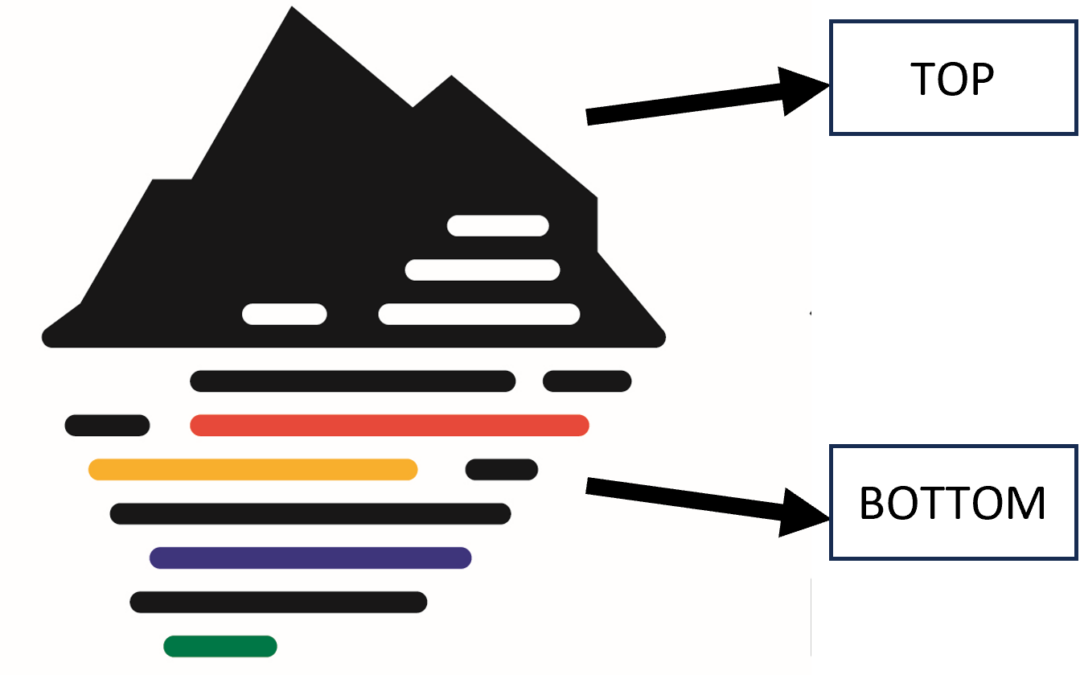
by Ria Olivier | Jul 12, 2023 | Announcement, Antarctica, Gough Island, Marion Island, News, Research, SA Agulhas II, SA Polar Research Infrastructure, SAPolarRI, SAPRI, Science, Southern Ocean, Stations, sub-Antarctic
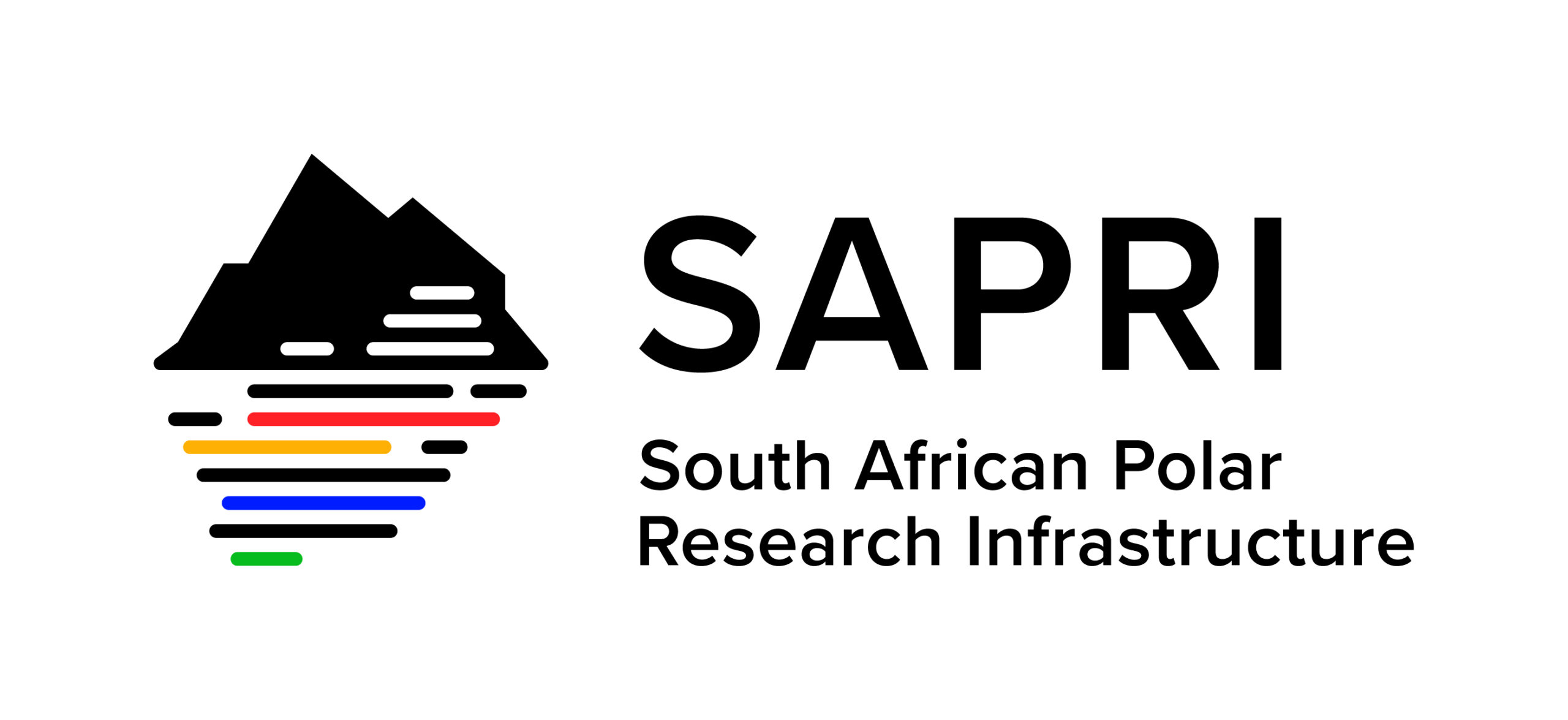
The South African Polar Research Infrastructure (SAPRI) is getting a corporate identity (CI).
The South African Polar Research Infrastructure (SAPRI) is one of 13 large Research Infrastructures (RIs) developed by the Department of Science and Innovation (DSI) as part of the South African Research Infrastructure Roadmap (SARIR).
The SAPRI was established in 2021 to ensure coordination of South African marine and Antarctic research as a national Big Science programme, providing seamless access to existing and new research infrastructure required to develop and enhance long-term observations of South Africa’s polar region.
The ultimate objective of SAPRI is to enable balanced research growth across the polar disciplines, and to maintain and further expand the world-class long-term observational datasets already established.
The SAPRI is designed as a consortium hosted at the South African Environmental Observation Network (SAEON), a long-term environmental observation and research facility of the National Research Foundation (NRF).
The SAPRI logo
The first step of the SAPRI CI was the design of a logo. The CI vendor has worked with a somewhat complicated brief, making sure that the CI is inclusive of marine and polar (land and sea), not focusing on one specific aspect within SAPRI.
The brief furthermore included:
- Transforming, strengthening and consolidating SA’s marine and polar sciences.
- Recognisable, professional and accessible.
- Pride in SA’s involvement in marine and polar research.
SAPRI logo rationale:
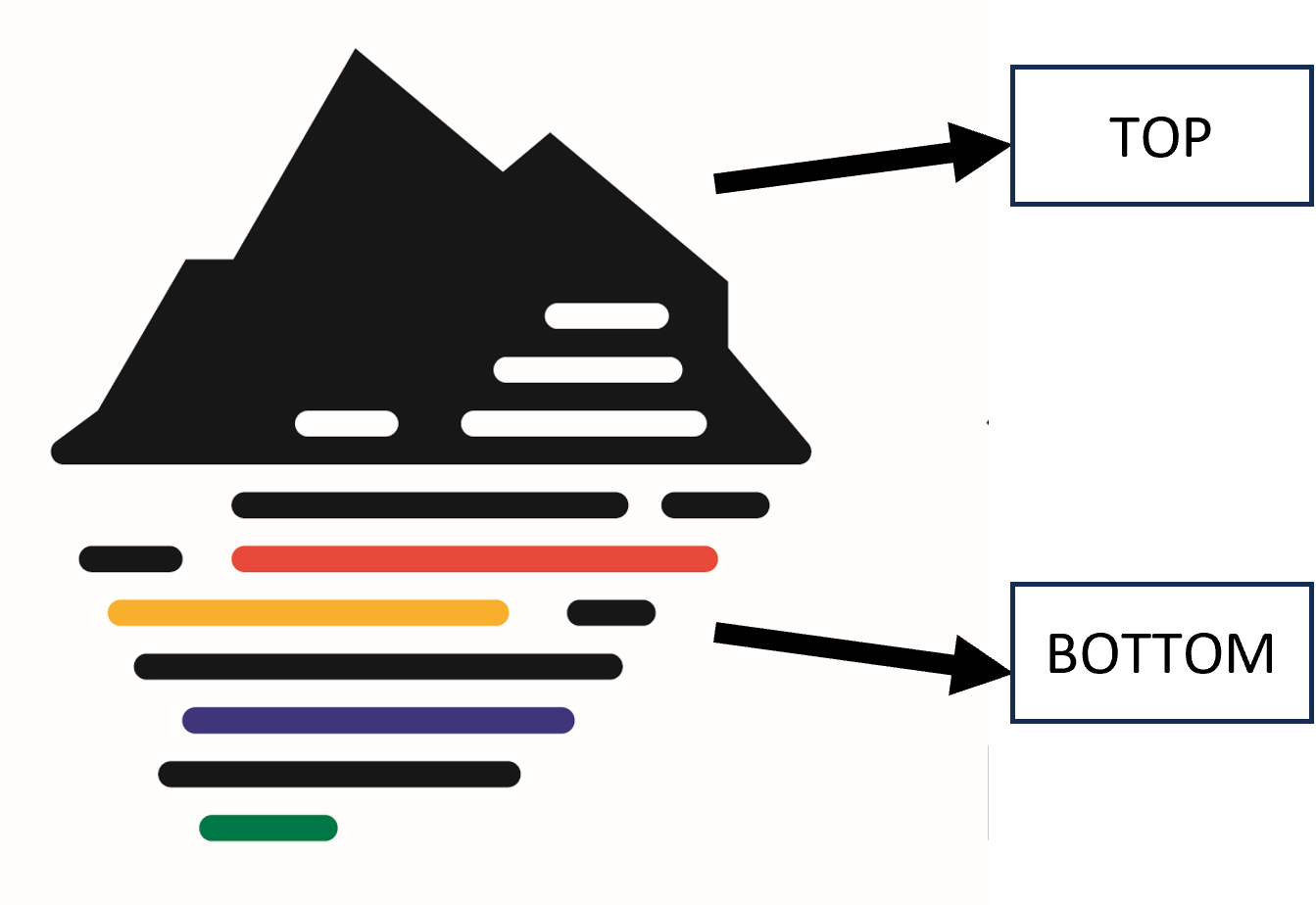 The graphic element in this logo is a representation of SAPRI’s infrastructural support to research on both land and at sea.
The graphic element in this logo is a representation of SAPRI’s infrastructural support to research on both land and at sea.
While the top part is representative of land features of Antarctica and sub-Antarctic islands (e.g. ice, mountain), the bottom section represents water, or the ocean, as well as the shape of South Africa as seen on a map. In addition, the simplistic lines used to form the water is a rudimentary representation of data and the continuity of research.
To make for a versatile logo, transferable to different materials and backgrounds, various modifications can be used.
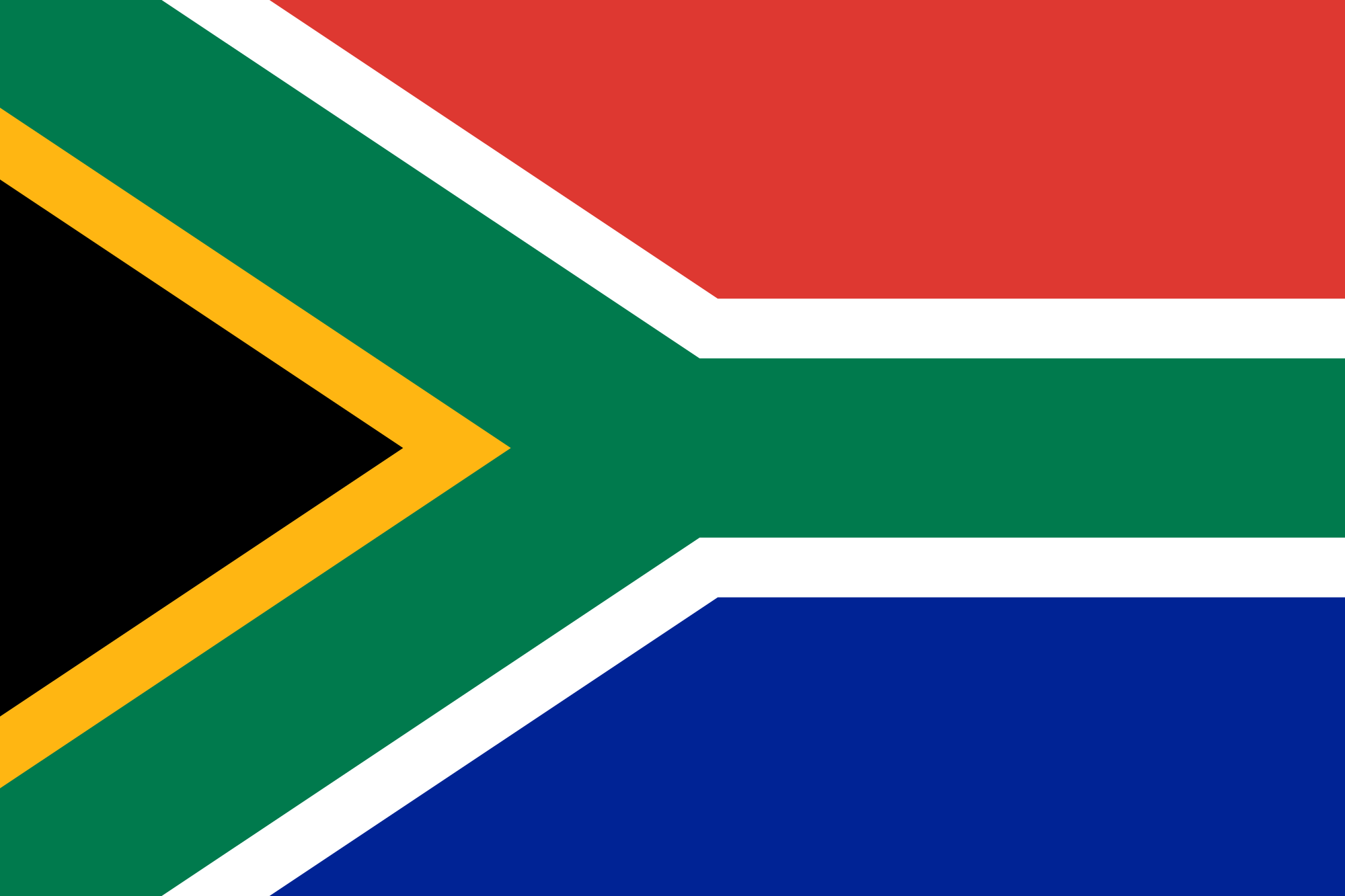 The main logo will have the colours of the South African flag incorporated.
The main logo will have the colours of the South African flag incorporated.
Full colour versions (horizontal, vertical or in a circle):
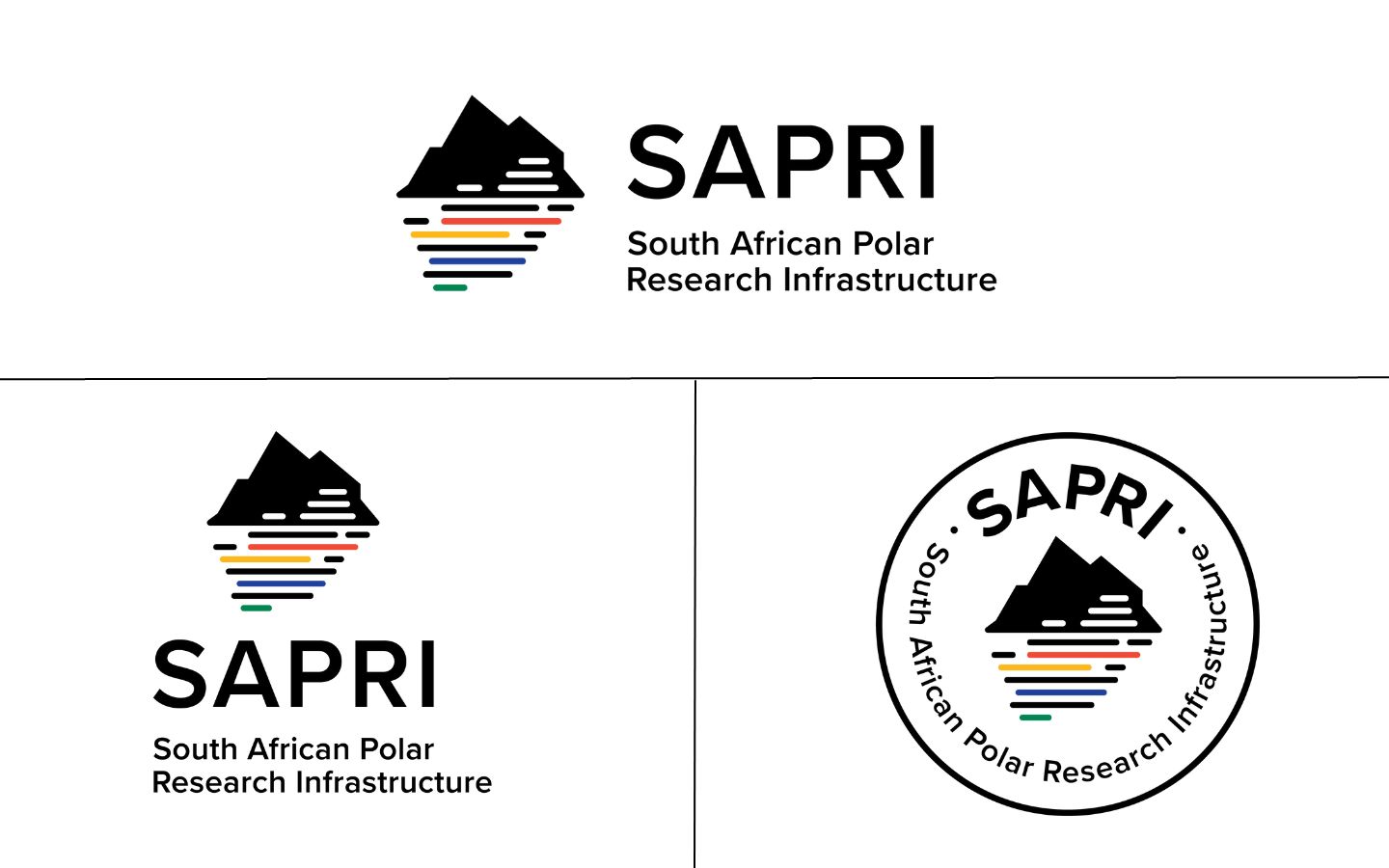
Black versions (horizontal, vertical or in a circle):
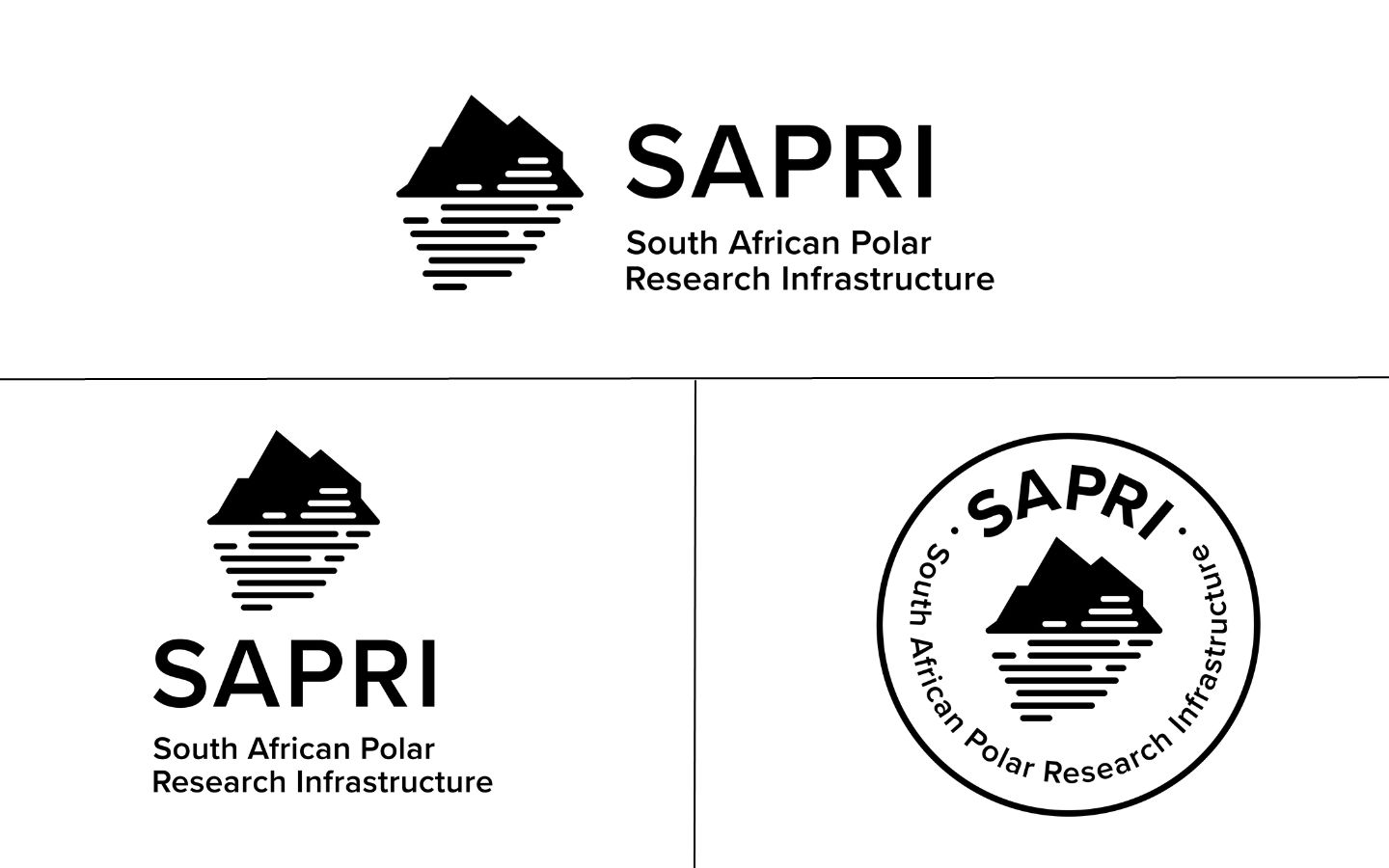
White versions (horizontal, vertical or in a circle) – to be used on a full colour backgrounds:
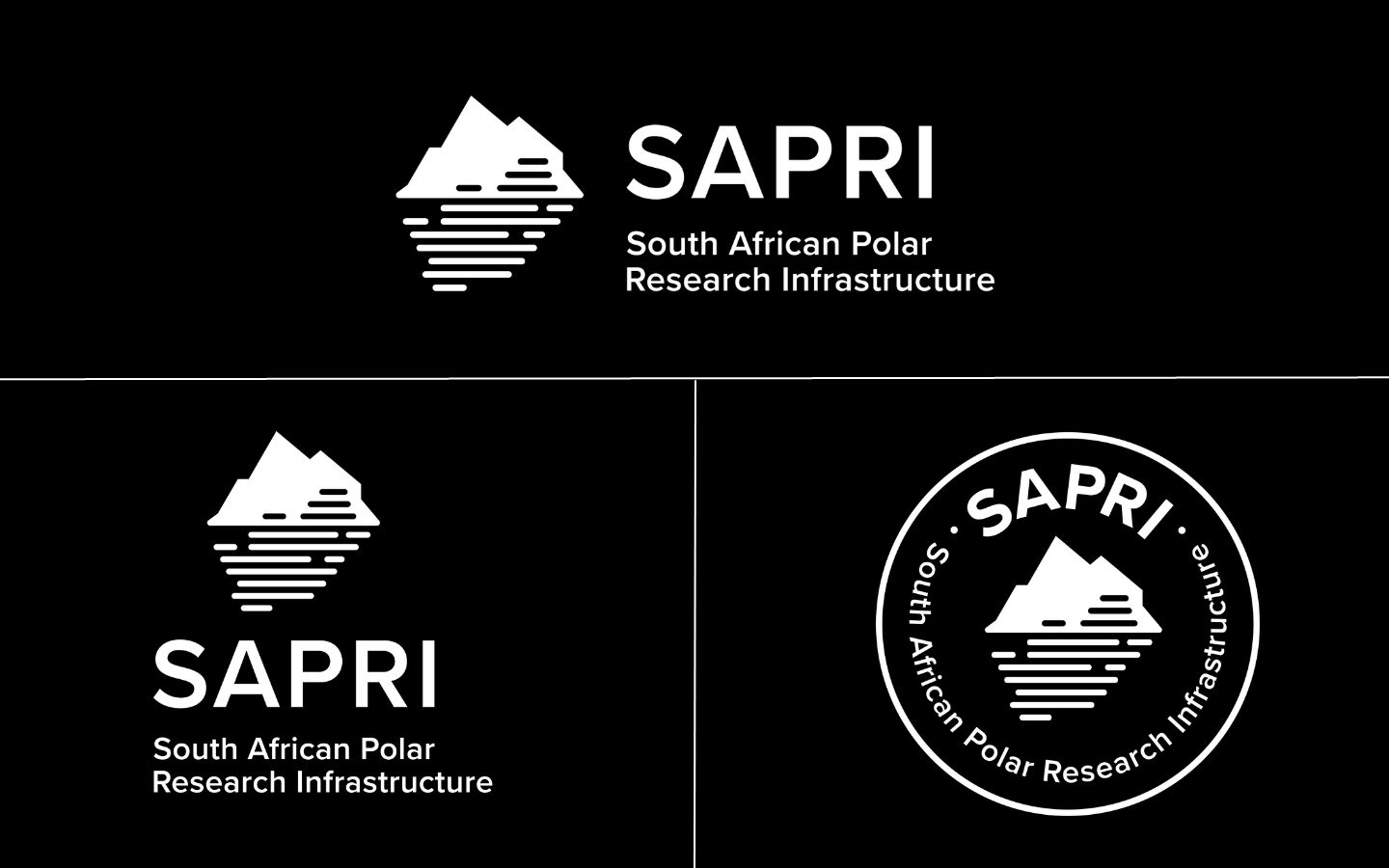
Read more about SAPRI here.
Note that the SAPRI website is currently in the design and development phase.
Anche Louw, South African Polar Research Infrastructure (SAPRI DPS Node), 12 July 2023
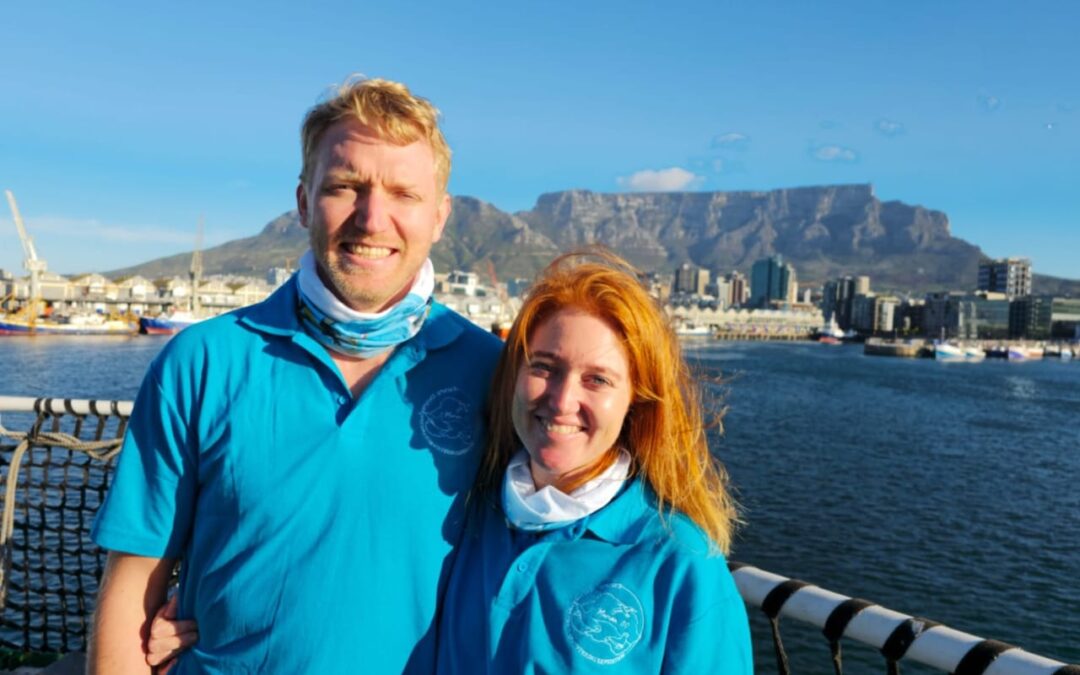
by Ria Olivier | May 10, 2023 | Current Event, Marion Island, News, Overwintering Team, Prince Edward Islands, Research, SANAP, SAPRI, Science, Southern Ocean, Stations, sub-Antarctic, Team member
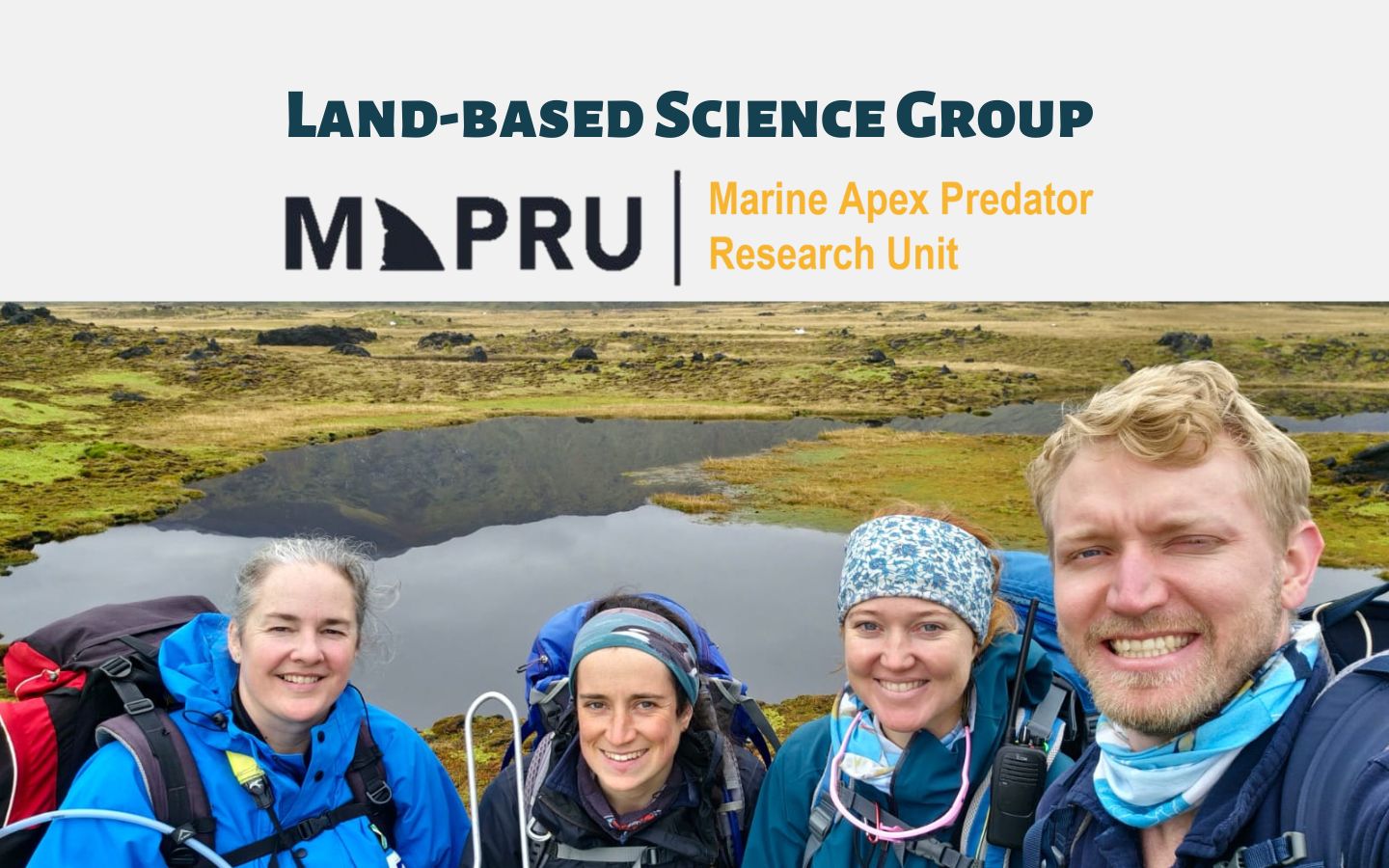
| TEAM | MAPRU | Affiliation |
| Project Name | Avian scavengers & seabirds |
| Principal Investigator | Dr Maëlle Connan | MAPRU, Nelson Mandela University |
| Co-Investigator | Prof Peter Ryan | Fitzpatrick Institute of African Ornithology, University of Cape Town |
| M79 Field Assistant | Lucy Smyth | MAPRU, Nelson Mandela University |
| M80 Field Assistant | Christopher Jones | MAPRU, Nelson Mandela University |
| M80 Field Assistant | Michelle Risi | MAPRU, Nelson Mandela University and the South African Polar Research Infrastructure (SAPRI) |
This team is studying seabirds at Marion Island and has two projects for the period 2021-2023:
1) Avian scavenger project focusing mostly on Black-faced Sheathbill, Kelp Gull and Brown Skua as well as some of their prey.
2) FitzPatrick long-term monitoring of Wandering Albatross, Grey-headed Albatross and Northern Giant Petrel.
More about the avian scavenger project:
This project started in 2021. It is tightly linked to the Mouse-Free Marion project.
Our aim is two fold: 1) we fill identified scientific gaps at the bird level that are crucial for best planning of the mouse eradication and development of appropriate mitigation measures. We are mostly focusing on three species of avian scavengers: Black-faced Sheathbill, Kelp Gull and Brown Skua and some of their prey. 2) we propose to use the three scavengers as indicators of recovery of the terrestrial ecosystem post-eradication by establishing baselines for the scavenger guild and their prey against which the impact of a successful mouse eradication can be measured in years to come.
More about the FitzPatrick long-term monitoring project:
The FitzPatrick long-term monitoring of Wandering and Grey-headed albatrosses and Northern Giant Petrel started in the early 1980s and has continued ever since. This individual-based monitoring of threatened species allows us to study the threats they face at sea (e.g. fisheries) and on land (e.g. mice) in order to act and decrease these threats and improve the conservation status. The species’ long-term monitoring is crucial as it allows us to decipher abnormal years from long-term trends.
More about the fieldwork:
The two projects above involve for example extensive counts of birds, lots of hiking, observations of bird behavior and record keeping of the activity of known individuals year after year.
What are your plans for this takeover:
During the takeover, we will be debriefing the year of Lucy Smyth who has worked on the island for our projects since April 2022. We will also train Chris and Michelle for the year ahead in all aspects, from field work to data entry and back-ups.
Follow MAPRU:




Follow PFIAO:




Text by Dr Maëlle Connan.
Images supplied by Christopher Jones.
Featured image: The MAPRU takeover 2023 team. L-R: Dr Maëlle Connan (PI), Lucy Smyth (M79 MAPRU Field Assistant), Michelle Risi (M80 MAPRU Field Assistant) and Christopher Jones (M80 MAPRU Field Assistant). Image taken on the Western side of the island.
Anche Louw, South African Polar Research Infrastructure (SAPRI DPS Node), 10 May 2023


